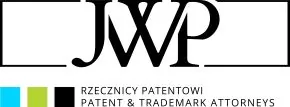On November 13, 2018, the United States Patent and Trademark Office (USPTO) adopts the standard of patent claims that will be applied during inter partes review (IPR), post-grant review (PGR), and covered business method (CBM) and review proceedings before the Patent Trial and Appeal Board (PTAB).
Therefore, the USPTO will adopt one standard of construing patent claims that will be applied not only in patent prosecution, but also in patent infringement proceedings and invalidation of a patent in the course of opposition proceedings.
The Phillips standard is a result of a court battle in the US in the case PHILLIPS v. AWH CORP1. Summing up, in the interpretation of patent claims, the most important is the ordinary meaning of words used in a claim as understood by a person skilled in the art. The guidelines in the description of an invention where the patentee may include his own glossary of the terms used in the description or in the claims, may be helpful as well. In contrast, other external sources, such as public domain dictionaries, expert testimony or prosecution history are of secondary importance for the interpretation of patent claims.
Moreover, the prosecution history before the Patent Office and the information produced in the course of prosecution calls for a more sceptical approach than the expressions finally used in the claims, since the final scope of protection is not known, as it is being established specifically in the course of prosecution.
Therefore, in the proceedings before the Patent Trial and Appeal Board (PTAB), the USPTO will replace the standard of broadest reasonable interpretation (BRI) applied to date.
As a result of the BRI standard applied by USPTO experts so far, the patent could have been easily invalidated on the basis of the same prior art documents.
Read more on http://www.ipwatchdog.com/2018/10/10/uspto-publishes-final-rule-phillips-standard-ptab/id=102210/ .
Footnote
1. The case Phillips vs AWH refers to infringement dispute pertaining to U.S. patent 4,677,798. Edward H. Phillips invented and obtained a patent for steel shell modular panels that may be welded together to produce vandalism resistant walls. The panels are especially useful in building prisons, as they carry building structure and are resistant to impact, fire and noise. Mr Phillips obtained a patent for the invention and entered into an agreement with AWH Cor. to sell the panels. After termination of the agreement, AWH continued to use the invention without the knowledge and consent of Mr Phillips, who filed a lawsuit for patent infringement and misappropriation of a trade secret. Finally, the United States Court of Appeals in full composition established a hierarchy of evidence taken into account when interpreting patent claims.
The content of this article is intended to provide a general guide to the subject matter. Specialist advice should be sought about your specific circumstances.

